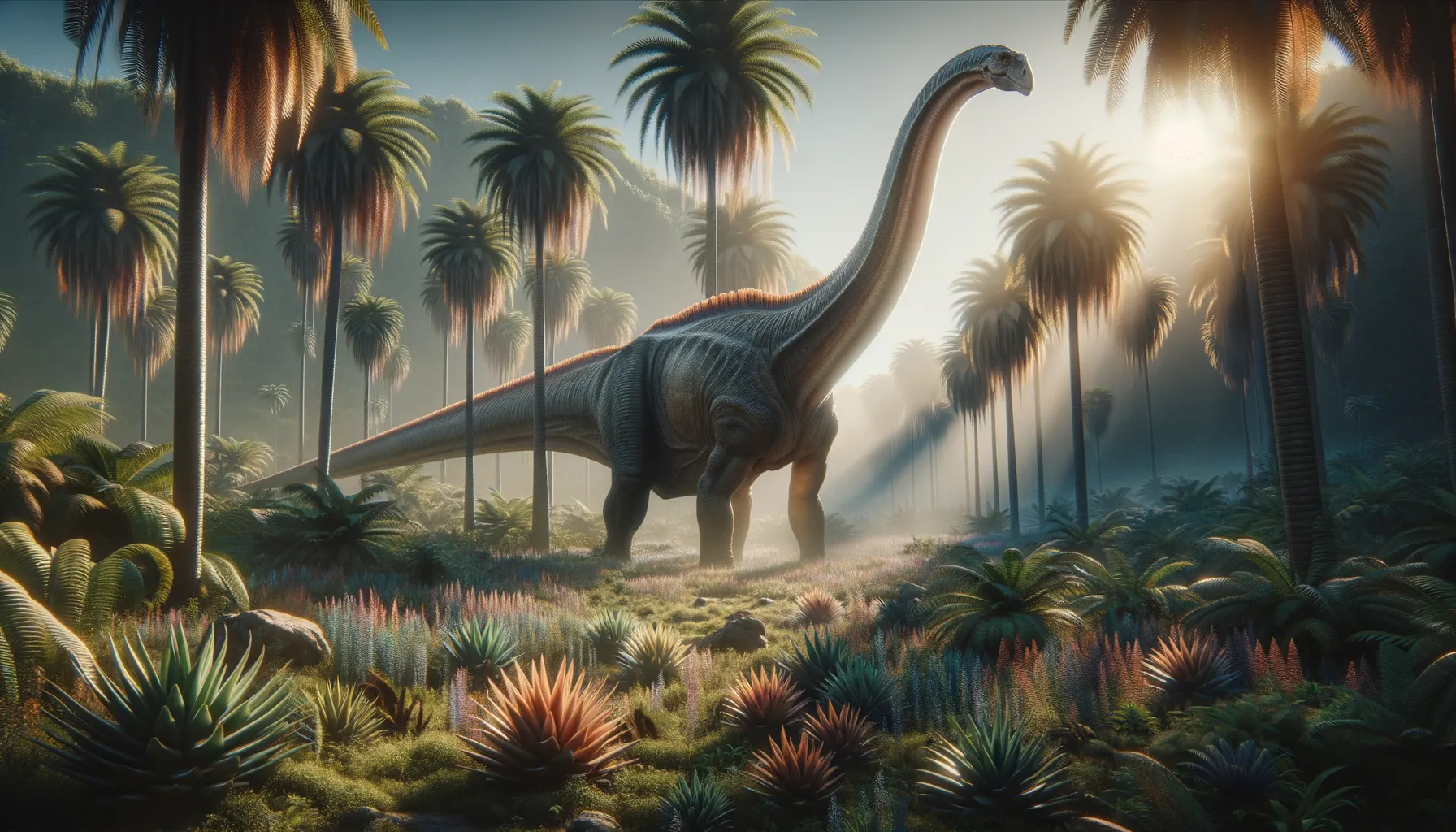
Omeisaurus
Gentle giant of the Jurassic era.
Period
Jurassic
Length
Up to 20 meters long.
Height
Approximately 12 meters tall.
Weight
Around 10 tons.
Omeisaurus was a large herbivorous dinosaur that roamed the earth during the early to middle Jurassic period. Known for its extremely long neck, it was able to reach high vegetation, making it a successful browser in its natural habitat. With its massive body and unique stature, Omeisaurus represents one of the many colossal sauropods that thrived millions of years ago.
Diet
Omeisaurus was a herbivore, primarily feeding on plant material. Its long neck allowed it to reach high branches and foliage that other smaller herbivores could not access.
Hunting
Being a herbivore, Omeisaurus did not hunt other animals. Instead, it spent much of its time grazing and browsing for food.
Environmental challenges
Omeisaurus faced environmental challenges such as changes in climate and vegetation which could affect food availability. Predators such as large theropods may have posed a threat, especially to younger or weaker individuals. As a giant sauropod, maintaining such a large body also required significant energy and resources.
Speed
Slow due to its massive size.
Lifespan
Estimated to be several decades.
First discovery
Discovered in 1939 in Sichuan, China.
Fun Facts
- Omeisaurus was a long-necked dinosaur that lived during the Middle Jurassic period, roughly 165 million years ago.
- It roamed what is now known as China, where its fossils have been discovered.
- Omeisaurus could grow up to 60 feet long, making it one of the larger dinosaurs of its time.
- Its long neck is thought to have helped it reach high vegetation, similar to the modern-day giraffe.
- Omeisaurus traveled in herds, which could have helped it protect itself from predators.
- This dinosaur was a herbivore, meaning it only ate plants.
- The name 'Omeisaurus' means 'Emei lizard,' named after Mount Emei in China where its fossils were first discovered.
Growth and Development
Omeisaurus grew rapidly in its early years to reduce vulnerability to predators. Its long neck and tail developed as it matured, assisting in feeding and balance. The development required substantial nutrients, emphasizing the need for a plentiful food source.
Habitat
Omeisaurus inhabited lush, forested areas with abundant plant life. These environments provided ample food and cover from predators. The wet climate of its habitat supported diverse flora, which was crucial for its survival.
Interaction with other species
Omeisaurus likely coexisted with other herbivores and carnivores, each occupying different ecological niches. Its size was a deterrent to most predators, but it depended on group behaviors or size to avoid predation.
Natural lifespan
Omeisaurus could naturally live for several decades if conditions were favorable.
Reproduction
Omeisaurus likely reproduced by laying eggs in a secure location with ample vegetation cover. Parental care, if any, is not well-documented, but many sauropods laid numerous eggs to increase the likelihood of offspring survival.
Social behaviour
Omeisaurus may have exhibited some social behavior, possibly moving in groups for protection. Herding could provide defense against predators and also aid in locating food resources in vast areas.
Fossil locations
Fossils of Omeisaurus have been predominantly found in the Sichuan Basin of China. These sites provide important insights into the Jurassic period's environment in Asia.
